NGC 5566 Galaxy Group
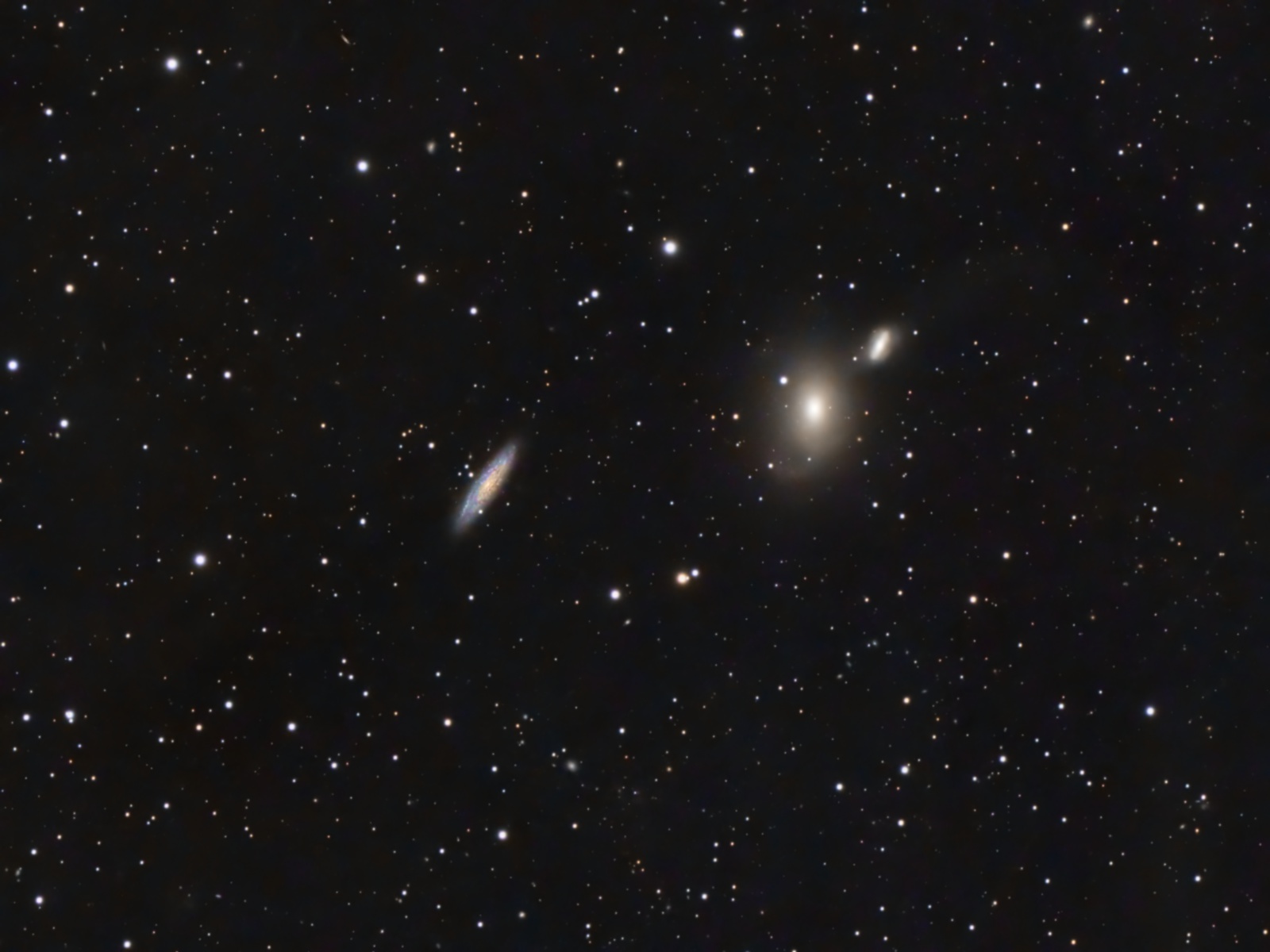 Click image for full size version
Click image for full size version
July 25, 2022
The two largest galaxies in this image are NGC 5577 (left) and NGC 5576 (right). NGC 5574 is the smaller galaxy to the upper right of NGC 5576. All are part of the NGC 5566 galaxy group. The other members (including the namesake of the group) are part of Arp 286.
NGC 5577 is a spiral galaxy and shows blue spiral arms, a yellow core and plenty of detail. It’s about 68 million light years away. It’s long axis is about 1/10th of the Moon’s diameter. NGC 5576 and NGC 5574 are at a similar distance. The other galaxies in the annotated image are much further away and therefore appear much smaller on the sky.
Tekkies:
Acquisition, focusing, and control of Paramount MX mount with N.I.N.A., and TheSkyX. Focus with Optec DirectSync motors and controller. Equipment control with PrimaLuce Labs Eagle 4 Pro computer. All pre-processing and processing in PixInsight. Acquired from my SkyShed in Guelph. Very good transparency and average seeing. Acquired May 24-June 3, 2022 under a moon-free sky.
Sky-Watcher Esprit 150 f/7 refractor and QHY600M camera with Optolong UV/IR filter
105x5m OSC = 8hr45m
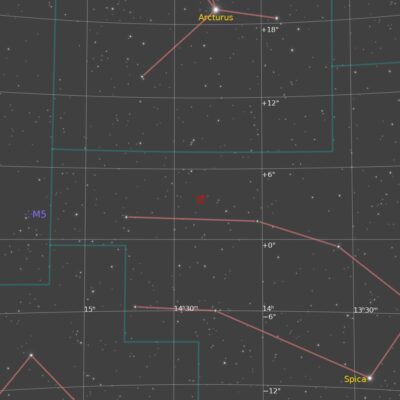
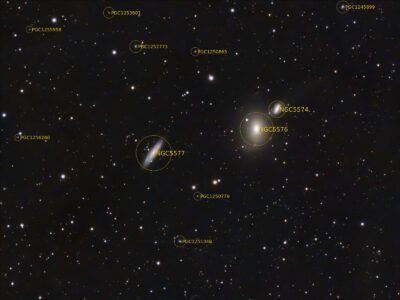
The WeightedBatchPreProcessing script was used to perform calibration, cosmetic correction, weighting, registration, local normalization and integration of all frames.
DrizzleIntegration was applied to the OSC frames, and the result was aligned to the Luminance master with StarAlignment. This yielded aligned Lum and Colour masters.
DynamicBackgroundExtraction was applied to the luminance and OSC masters.
Colour
Colour Calibration: PhotometricColorCalibration was used to calibrate the OSC master.
Linear Noise Reduction: NoiseXterminator was used to reduce noise in the background areas with settings Amount=0.9 and Detail=0.15
Stretching: HistogramTransformation was applied to make a pleasing yet bright image.
Luminance
Deconvolution: A star mask was made from the Luminance master to use as a Local Deringing Support Image. The GAME script was used to make a mask selecting only NGC 5577 for deconvolution. Deconvolution was applied (50 iterations, regularized Richardson-Lucy, ParametricPSF mode with default settings; Global dark deringing = 0.02; Global bright deringing 0.007).
Linear Noise Reduction: NoiseXterminator was used to reduce noise in the background areas with settings Amount=0.9 and Detail=0.25
Stretching: HistogramTransformation was applied to make a pleasing yet bright image.
Combining Luminance and Colour Images
Luminance addition: LRGBCombination was applied to replace the lightness of the RGB image with the Luminance master.
Additional Processing
Star Removal: StarNet v2 was used to remove stars.
Nonlinear Noise Reduction: NoiseXterminator was used to reduce noise in the background areas of each image with settings Amount=0.9 and Detail=0.25
Contrast Enhancement: LocalHistogramEqualization was applied using an inverted lightness mask to protect the background and select the galaxies. Three passes were applied (scale 20, max contrast 1.5, strength 0.5, 1 iteration; scale 80, max contrast 1.5, strength 0.4, 1 iteration; and scale 150, max contrast 1.5, strength 0.18).
Sharpening: MultiscaleMedianTransform was used with the same mask used for Deconvolution to sharpen Layers 2 – 4 with strengths of 0.05, 0.02 and0.01, respectively.
Star Processing and Restoration: ChannelMatch was used to align the channels in the stars in the stars-only image extracted by StarNet2. The extracted luminance channel of this image was used as a mask to select stars only, and Curves was used to boost saturation in the stars. The stars were added back into the image using straight addition in PixelMath.
Final Steps: Background, galaxy and star brightness, contrast and saturation were adjusted in several iterations using CurvesTransformation with masks as required. MorphologicalTransformation was used in Morphological Selection mode to slightly reduce the size of stars. ICCProfileTransformation (sRGB IEC61966-2.1; Relative Colorimetric with black point compensation) was applied prior to saving as a jpg.


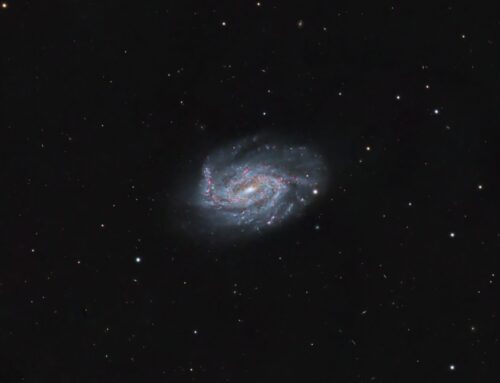
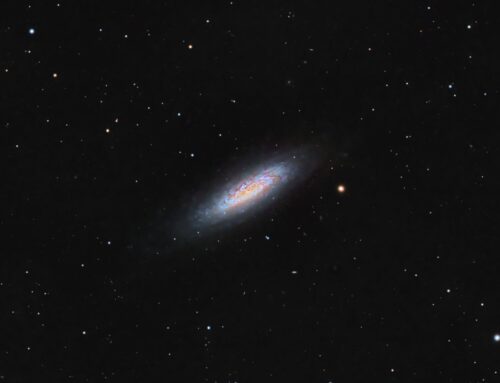
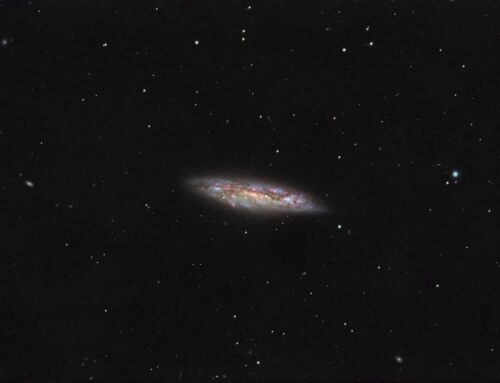
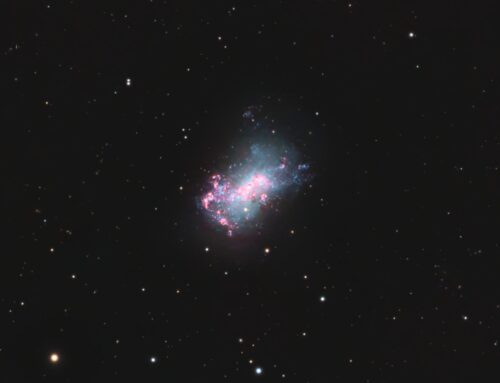
Lovely image Ron as always! Techie info is always almost as interesting as you image as I learn to comprehend the important facets of image aquisition and processing.
Greatly appreciate your humanity to those striving to your heights! Keep them coming.
Peace & best wishes from Australia!
I don’t understand the settings you use with LocalHistogramEqualisation. The process has Kernel Radius, Contrast Limit and Amount but you say scale 20, max contrast 1.5, strength 0.5. I assume they are the same descending thing, eg, Kernel Radius is scale, etc so I just wanted to make sure it is.
Thanks.
Yes, they’re the same. I’ll update that going forward. The names changed some time ago.